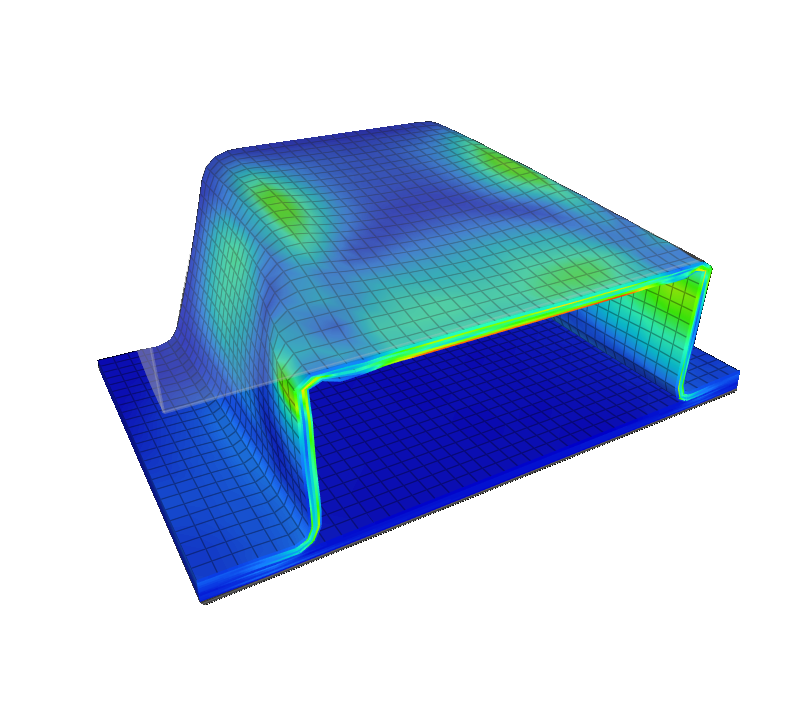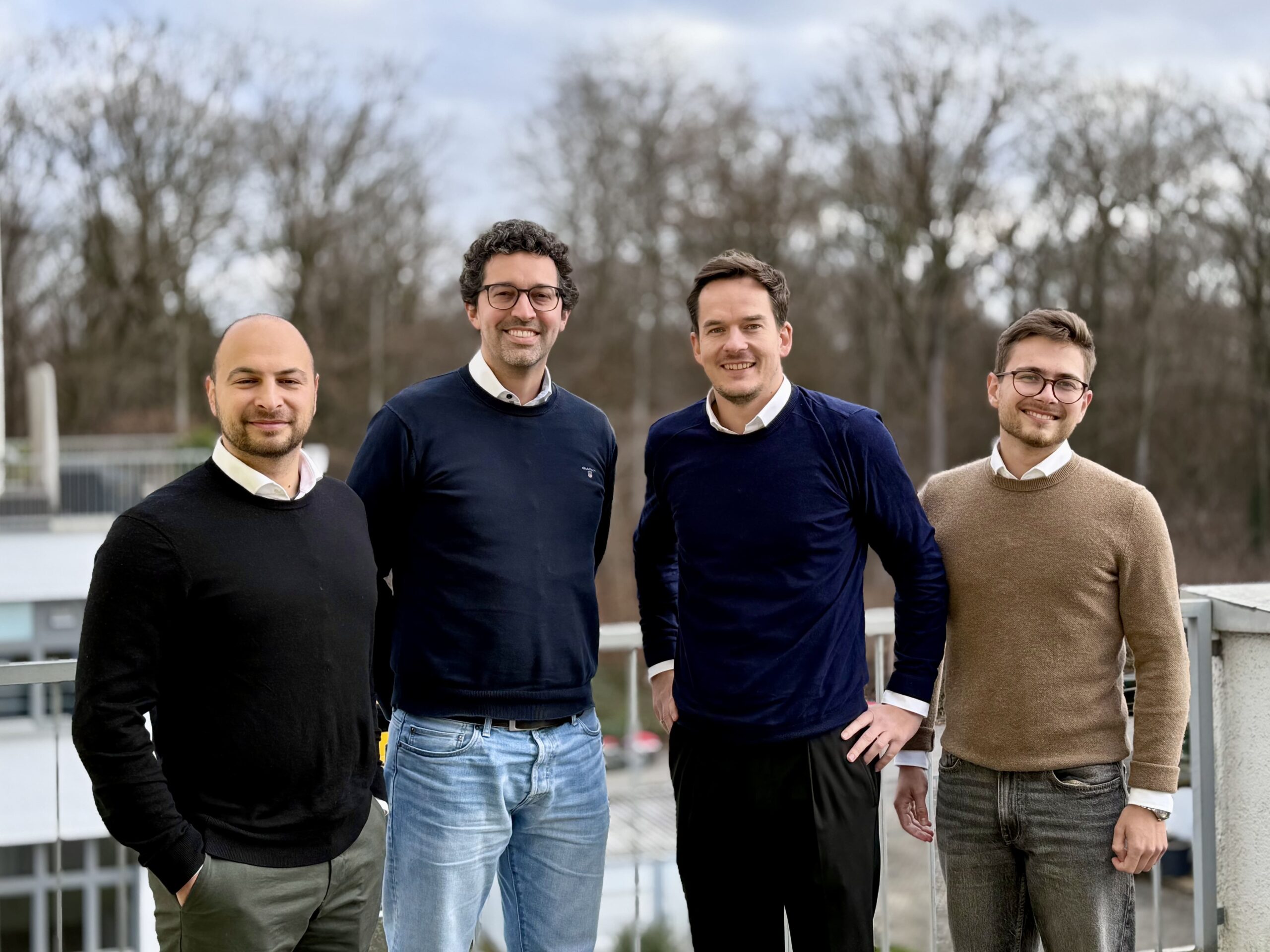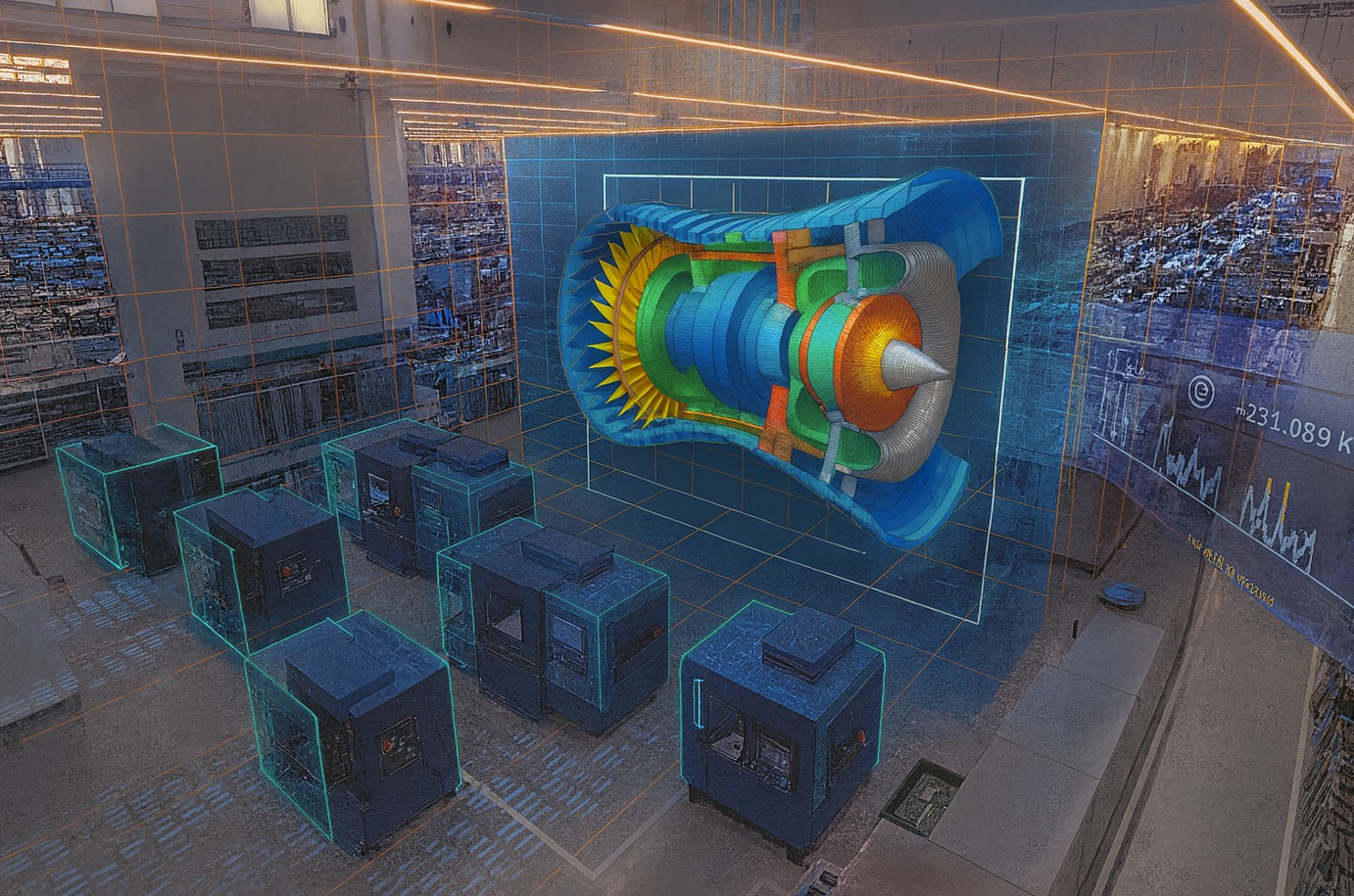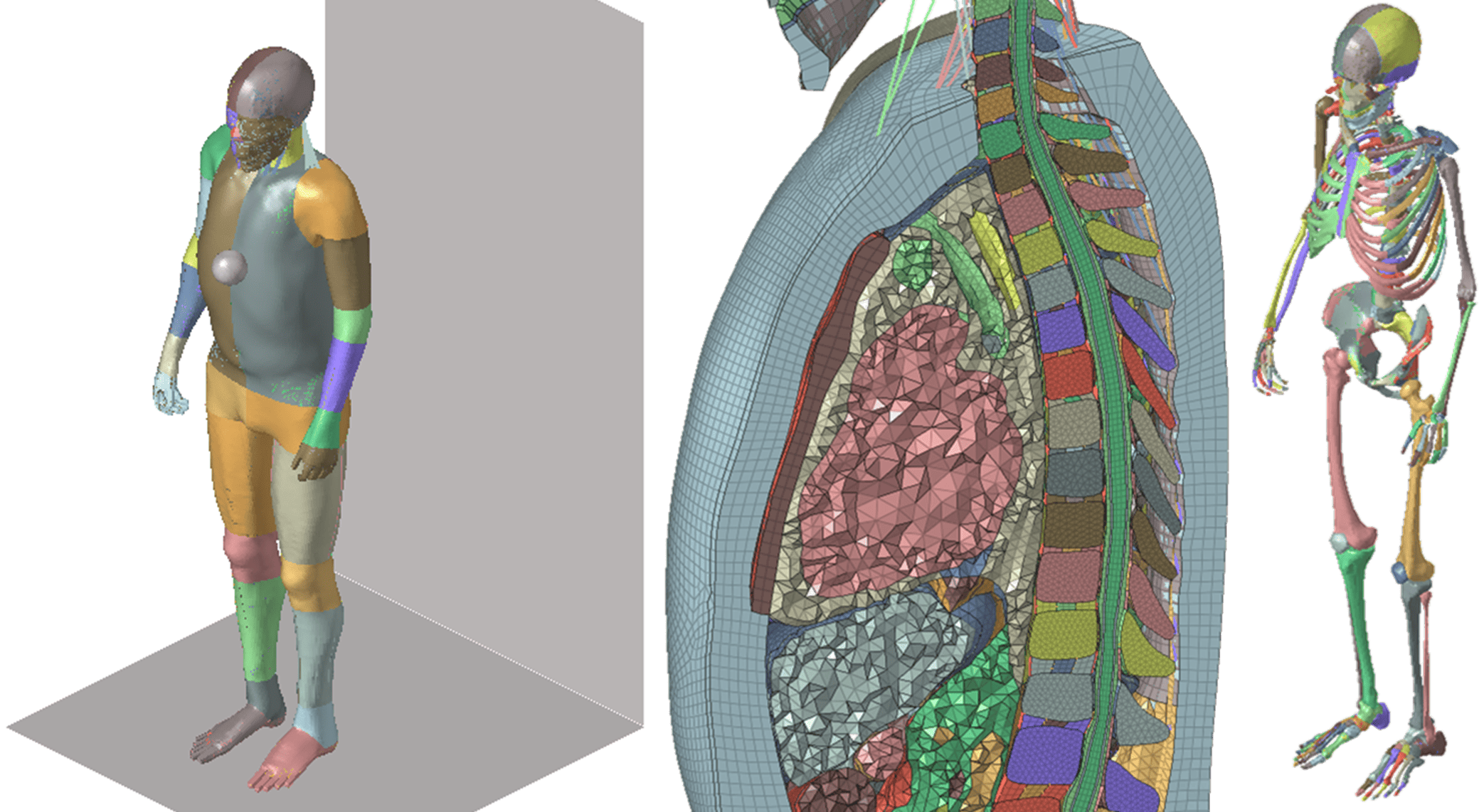Crash Test Simulation at FiniteNow
At FiniteNow, we apply advanced finite element analysis (FEA) to crash test and crashworthiness simulations. This approach allows us to predict the behavior of a vehicle’s structure and its occupants during a collision – without the immediate need for costly and time-consuming physical tests.
Using powerful solvers such as Ansys LS-Dyna, ESI Pam-Crash, and Simulia Abaqus, our engineers can accurately model vehicle structures and simulate crash scenarios under varying conditions. This includes assessing the integrity of frames, body panels, doors, and roofs, as well as evaluating occupant restraint systems such as airbags and seatbelts. Beyond structural performance, simulations provide clear insights into how impact energy is absorbed and how forces are transmitted to the occupants.
Because FEA enables the virtual testing of multiple design iterations, it helps reduce both development time and physical prototyping costs. By optimizing structural layouts and materials before a prototype is built, manufacturers can move into physical validation with greater confidence. In addition, our simulations are designed to help products meet or exceed global crash standards including Euro NCAP, NHTSA, IIHS, MLIT, ANCAP, and CATARC.
Benefits of Crash Simulation for Your Development Process
Traditional crash tests require significant investment, involve complex logistics, and depend on the availability of specialized facilities – which are often booked out months in advance. The challenge for manufacturers is clear: to pass regulatory and internal safety requirements with as few physical prototypes and tests as possible.
Crash simulations provide a reliable way to de-risk this process. By running FEM crash calculations on complete vehicle models, we can identify critical weak points before physical testing. Structural weaknesses are systematically addressed through design improvements, re-integrated into the FEM model, and re-simulated until performance meets the desired safety targets. The result: fewer prototypes, fewer surprises, and lower overall costs.
At FiniteNow, we make this process even more efficient by combining simulation expertise with a streamlined customer experience:
This combination ensures you not only gain high-quality technical results but also accelerate your development process from the very start.
Common Types of Vehicle Crash Simulations
Crash simulations are not limited to standard test setups. They can be combined, tailored to custom specifications, or extended into coupled simulations to reflect complex real-world scenarios. This flexibility allows us to model precisely the conditions relevant to your development program and deliver results that match your specific safety requirements.
Design and Engineering for Crash Simulation
Vehicle crashworthiness uses explicit finite element analysis to predict how a body-in-white, closures, interior and restraints manage crash energy, intrusion and occupant protection. Beyond pass-fail, high‑fidelity crash CAE explains how load paths form, where kinematics break down, and which changes most efficiently move the needle. FiniteNow’s Simulation Service combines instant quoting, senior crash engineering and pre‑audited partners to deliver fast, validated answers you can act on.
Why we perform Crash Tests and Simulations
Crashworthiness Engineering targets a calibrated balance of structural integrity, energy absorption and occupant protection against a defined loadcase matrix. Typical KPIs include intrusion limits at toe‑pan, A/B‑pillar and rocker, deceleration pulse shaping, and injury metrics such as HIC, Nij, chest deflection and V*C. Programs often optimize UHSS load paths, joint strategies and restraint timing to lift Euro NCAP or IIHS scores while holding mass and BOM. A robust plan links virtual FMVSS/UN‑R tests to physical builds with clear correlation gates, so simulation steers tooling decisions with confidence. As a Consulting partner, FiniteNow aligns CAE targets to your rating roadmap and delivers decision‑ready trade studies, not just raw plots.
How we model Crash Simulation at FiniteNow
Vehicle crashes are dominated by geometric, contact and material nonlinearities. Shell folding, spot weld rupture and adhesive delamination require rate‑sensitive plasticity and failure, far beyond linear screening. Linearized studies can support quick sanity checks on stiffness trends, but design moves are based on fully nonlinear runs with validated joint and material cards. Senior analysts frequently bracket results with conservative and aggressive failure parameters to test solution robustness. The takeaway: treat linear results as orientation only, never as certification guidance.
Crash events happen in milliseconds, so time‑resolved explicit simulation is the standard. You will extract vehicle pulse, energy terms, intrusion histories and occupant dummy channels at sub‑millisecond resolution. For restraint tuning, sled pulses derived from full‑vehicle runs link to subsystem models to iterate pretensioner timing, retractor force and airbag venting. Quasi‑static preloads like gravity and fit loads are applied before the event to stabilize trim and seat positioning. When exploring late design changes, delta time histories enable rapid A/B pulse comparisons without re‑postprocessing the entire model set.
Explicit solvers handle severe contact, buckling and fracture without Newton convergence limits, making them the default for barrier, pole and rollover impacts. Implicit comes in for pre‑stress, roof crush quasi‑static sequences, or to relax assemblies before an explicit handoff. A mature workflow blends both: implicit settle, explicit event, then implicit section cuts for residual deformation assessments. Experts also deploy mass scaling and selective hourglass control carefully to maintain physical fidelity while meeting timing. FiniteNow documents any scaling so reviewers see accuracy budgets, not black boxes.
Crashworthiness lives in the strain‑rate domain: AHSS/UHSS, press‑hardening steels, 6xxx/7xxx aluminum, Mg castings, plastics, foams and composites require rate‑dependent constitutive laws and calibrated failure. Choices include Cowper‑Symonds, Johnson‑Cook, GISSMO or GISSMO‑like damage for metals, MAT_CRUSHABLE_FOAM for energy absorbers, and cohesive or tiebreak for adhesives. Good models capture tearing in flanges, spot weld button pullout and adhesive peel-shear interactions, not just bulk stress. Temperature effects matter for hot‑stamped zones and airbag gases, and should be included when relevant. FiniteNow’s service integrates coupon and component test data so the deck reflects your actual materials, not handbook averages.
BIW is typically shell‑dominant with 2.5–5 mm element sizes in global areas and finer mesh in rails, rockers and intrusion‑critical zones. Solid elements are used locally for crash boxes, joints and battery enclosures where through‑thickness stresses matter. Spot welds may be beams, solids or solid‑spot proxies; adhesives use shell‑to‑shell cohesive layers with realistic thickness. Mesh consistency across variants supports morphing, enabling rapid theme sweeps without re‑meshing the platform. FiniteNow runs mesh quality and connectivity QA before first fire to prevent time lost on penetrations, free edges and bad normals.
Crashworthiness is multiphysics when airbags, pyros and HV batteries enter the picture. Airbag deployment needs CFD‑coupled or control‑volume gas models, vents and fabric properties; belts require retractor curves, slip rings and webbing friction. For EVs, pack deformation, crush triggers, isolation and thermal runaway risk form an additional acceptance envelope. Seat structures, pretensioners, load limiters and airbags must be tuned together to shape an acceptable occupant pulse. We routinely co‑simulate dummies or Human Body Models to connect structure changes to injury criteria, not just to intrusion numbers.
Deterministic runs answer “does this variant pass under nominal assumptions”. Robust programs sample tolerances in gauge, spot pitch, adhesive coverage, friction and material scatter to quantify pass probability. Latin hypercube or targeted DOE finds sensitivities so you can place mass where it buys the most rating, and keep it away from low‑leverage regions. This is especially valuable near thresholds, where a deterministic pass might hide a reliability problem. FiniteNow provides tornado charts and robustness scores to back sign‑off.
Crash portfolios benefit from a tiered stack: 1D lumped models for pulse feasibility, 3D sub‑system models for rail or rocker concepts, and full vehicle for rating loadcases. Sled models bridge vehicle pulses to restraint tuning and trim development. Component drop tests validate local failure behavior before scaling to vehicle level. With a consistent hierarchy you avoid over‑using the big model for every question and compress calendar time.
Although events are transient, frequency content in the pulse correlates with occupant injury risk and interior excitations. FFT or wavelet analysis of deceleration traces helps compare design themes beyond simple peak/mean metrics. On the structure side, pre‑event modal checks catch local panel flutter that can corrupt early contact transitions. This hybrid view supports better pulse shaping and NVH side‑effects awareness. It also accelerates sled correlation by matching frequency bands that drive chest and head responses.
Crash CAE generates terabytes – automation turns that into decisions. Scripted parameter sweeps, optimizer‑in‑the‑loop gauge maps and bead patterns, and discrete joint strategies help find mass‑efficient paths to the target star rating. S&R screens isolate truly influential variables so engineers spend cycles where it matters. Automated report packs tie results back to rating protocols so leadership sees business impact, not just plots. FiniteNow’s pipelines run on HPC with queue management to deliver multi‑variant decks overnight, not next week.
Stable time step, contact definitions, bulk viscosity, hourglass control and mass scaling are where senior analysts earn their keep. We apply contact damping minimally, avoid “sticky” interfaces that distort energy balance, and watch internal, kinetic and contact energy for leaks. Element deletion for failure is used judiciously to avoid non‑physical energy drops. Every run ships with a solver health summary so reviewers can trust that the physics – not numerics – drove the outcome. Where possible, we align controls with your OEM standards for seamless integration.
Continuum shells and solids carry most of the event, while discrete representations capture fragmentation or bolt separation when relevant. Spot weld failure via beams or solid nuggets with calibrated tiebreaks enables realistic joint tear‑out. For glazing or brittle trim, particle or discrete element methods model shatter and secondary impacts. Battery module crush may mix continuum for housing and discrete crushable foam for fillers. The combination is selected to answer the question with the least complexity that still captures the failure mode.
Typical mistakes in vehicle crashworthiness CAE and how to avoid them
- Unrealistic restraints – Pretensioner timing, limiter levels, belt routing and friction often default to generic values. Use measured curves and match seat geometry to avoid false positives on injury.
- Under‑modeled joints – Spot and adhesive modeling shortcuts mask load path collapse. Calibrate weld nuggets and adhesive layers to coupon/component tests.
- Barrier and dummy mis‑use – Outdated barrier meshes and poorly posed dummies corrupt comparisons to test protocols. Keep assets at current revision and validate initial positions and clearances.
- Mass and CG drift – Part toggles and late adds shift vehicle mass and CG unnoticed. Track delta mass and inertia per variant, and reconcile to targets each run.
- Solver hygiene – Excess mass scaling, sloppy contact and hourglass energy spoil physics. Enforce energy budgets and publish them with the results.
FiniteNow’s checklists catch these early: model QA, restraint library validation, materials sign‑off, barrier revision control, and automated mass/CG audits. That is how we ship reliable first‑fire runs and shorten the correlation loop.
Use Cases of Vehicle Crash Simulation
Small‑overlap frontal optimization
Small‑overlap crashes expose weak secondary load paths and wheel intrusion risks. We map tire, suspension and dash tie interactions, then build UHSS load paths and joint strategies that pull load into the rocker, hinge pillar and shotguns. Restraint timing is tuned to late pulse shapes typical of SOF. The result is reduced A‑pillar rotation, controlled steering column motion and improved head/neck metrics without a mass penalty. Our deliverable highlights the minimum set of parts to change for the next mule build.
EV side‑pole with battery enclosure protection
Side‑pole impacts challenge doors, rockers and the battery enclosure. We couple enclosure crush models, isolation checks and intrusion limits to a tuned restraint set with thorax and curtain airbags. Adhesive‑intensive joints and cast nodes are optimized to preserve pack clearance while maintaining door opening capability. A targeted gauge and bead map yields millimeter‑level improvements where they buy the most margin. You get a clear path to pass plus a bill‑of‑change aligned to manufacturing reality.
Sled‑based restraint tuning and pulse shaping
Full‑vehicle pulses are distilled to sled inputs to iterate belt and airbag calibration rapidly. We co‑simulate airbag fill, vent and seat‑track characteristics, then back‑propagate successful settings into the vehicle model. Pulse shaping through crush box tuning smooths high‑frequency content that drives HIC and chest metrics. The workflow compresses weeks of testing into days of combined CAE and sled work. Final outputs include validated restraint curves and assembly settings for the next prototype phase.
Learn more about our portfolio of Dynamic Simulation Services
FAQ – Vehicle crashworthiness Simulation Service
Crashworthiness simulation uses explicit finite element analysis to predict structural deformation, energy absorption and occupant injury metrics during a crash. It complements crash tests by exploring many variants early, shaping load paths and restraints before cutting tools. Simulation reduces prototype count and exposes causes, not just effects. The best programs pair CAE steering with targeted tests for fast, confident sign‑off.
Most teams begin with frontal moderate overlap, small overlap, side MDB, side pole and roof crush, mapped to your rating plan. Early in concept, run coarse models to prove primary load paths and pulse feasibility, then add fidelity as design freezes. For EVs, include battery enclosure and isolation checks in side events. Align each virtual test with the protocol you will actually certify to.
We need up‑to‑date CAD with part states, joint strategy, materials with rate‑dependent properties, and restraint component data. Vehicle mass, CG and inertia targets, barrier assets and dummy versions must match your test intent. If data is partial, we propose a staged plan with assumptions documented and replaced as measurements arrive. That transparency shortens correlation later.
We typically use a gated plan: correlate full‑vehicle mass and CG, then pulse shape and energy balance, then intrusion and timing, finally injury channels. Update the deck only where test deltas demand it to avoid whack‑a‑mole. Keep barrier and dummy assets version‑locked to the lab. FiniteNow provides side‑by‑side channel overlays and a change log that links deck edits to test deltas.
We usually pick models that reflect manufacturing route and thickness range: e.g., Johnson‑Cook or GISSMO for UHSS, crushable foam laws for energy absorbers, cohesive or tiebreak for adhesives. Calibrate to coupon and component tests across strain rate and temperature bands. Validate joint failure with spot peel and lap shear tests. We maintain a traceable material card library so updates are controlled, not ad hoc.
We mix beams or solids for spots depending on sensitivity and use cohesive layers for adhesives with measured thickness. Local submodels refine critical joints without over‑meshing the entire BIW. Failure is enabled only where it matters to decisions, keeping numerics stable. A weld map links CAE IDs to manufacturing so design changes propagate cleanly.
We limit mass scaling to pre‑defined budgets, monitor kinetic, internal and contact energy and enforce hourglass energy thresholds. Contact is tiered to avoid double counting and “sticky” interfaces. Element deletion is audited for energy jumps. Every run ships with a solver health report so reviewers can audit fidelity quickly.
A screened DOE isolates high‑leverage variables, then surrogate models approximate response surfaces for rapid exploration. Optimization operates within manufacturable bounds and respects crash‑time constraints like packaging and joining. Robustness is reported as pass probability with tornado charts to guide mass placement. HPC queues and checkpointing keep wall‑time predictable.
ATDs remain the standard for ratings and regulation; HBMs add insight for complex kinematics, submarining and restraint interactions. We deploy HBMs when injury mechanisms are ambiguous or when ATD measures do not explain outcomes. Correlation uses targeted component and sled tests with biofidelity corridors. We document applicability and limitations so decisions remain defensible.
Instant quoting turns scope into a scheduled run in hours, not weeks. You get a kickoff pack with assumptions, QA plan and first‑fire timing. Our pre‑audited provider network ensures the right solver skills and domain experience are on your job from day one. Procurement friction disappears, engineering momentum remains.
Standardized QA checklists, solver health reports and correlation gates are baked into every project. NDAs, segregated data rooms and role‑based access protect your IP. Senior FiniteNow engineers review all deliverables so quality is uniform regardless of execution location. You see one face, one standard.
You receive validated decks, a change‑controlled material and restraint library, run logs with energy audits, and executive summaries mapped to Euro NCAP, IIHS and FMVSS criteria. We include a prioritized bill‑of‑change, mass impact per change and expected score lift. For leadership, we provide a one‑page storyline that ties CAE results to program risk and decision timing. That is how simulation becomes a business tool, not just an engineering artifact.
Start Now! It will only take 12 minutes
It has never been faster, easier and more cost effective to get a quotation for your crash simulation needs:
Vehicle Crashworthiness and FEA
The Textbook Section
Introduction
Vehicle crashworthiness is the ability of a vehicle to protect its occupants during an accident. It is not only a matter of structural strength but of controlled deformation, energy absorption, and effective restraint systems. Modern automotive design has advanced far beyond simple impact resistance. The goal today is to engineer vehicles that dissipate crash energy in a predictable manner while preserving the integrity of the passenger compartment and minimizing injury risks.
Finite Element Analysis (FEA) has become indispensable in crashworthiness development. Decades ago, crashworthiness could only be assessed through expensive prototype crash tests. Today, entire crash programs are conducted virtually using FE analysis, with physical tests serving primarily to validate models and confirm regulatory compliance. For automotive OEMs and suppliers, FEA services in crashworthiness provide a strategic advantage: faster iteration cycles, reduced prototyping cost, and the ability to explore design variants that would be impractical to test physically.
Fundamentals of Crashworthiness Mechanics
Crashworthiness rests on three mechanical principles: energy absorption, structural collapse management, and occupant compartment survival.
- Energy absorption: In a frontal collision, a typical passenger car must dissipate hundreds of kilojoules of kinetic energy in milliseconds. This energy cannot disappear; it must be absorbed through plastic deformation of the structure. Controlled folding of longitudinal rails, crumpling of crash boxes, and crushing of bumper beams all contribute. The better the energy absorption, the less is transmitted to the passenger compartment.
- Structural collapse management: Not all deformation is beneficial. The structure must deform in a controlled way, avoiding instabilities or collapse mechanisms that compromise the survival space. For example, a poorly designed A-pillar may buckle inward, intruding into the passenger compartment. FEA allows engineers to visualize and tune these collapse mechanisms long before prototypes exist.
- Occupant compartment survival: The passenger cell, often referred to as the “safety cage,” must remain largely intact. While outer structures absorb energy, the cabin must resist intrusion. This balance – soft outside, strong inside – is at the core of crashworthiness design.
FEA in Crashworthiness Simulation
Crashworthiness analysis in FEA typically uses explicit dynamic solvers such as LS-DYNA, Radioss, PAM-CRASH, or Abaqus/Explicit. These codes are designed to handle highly nonlinear problems with large deformations, material plasticity, fracture, and thousands of contact interactions.
A full vehicle crash model may consist of several million elements. Body-in-white structures are modeled with shell elements, while foams, trims, and airbags may require solid or continuum elements. Spot welds, adhesives, and bolts are included with simplified but calibrated joint models. Material modeling is critical: steels must include strain-rate sensitivity and failure criteria; aluminum alloys require anisotropy; composites demand progressive damage or cohesive zone modeling.
Simulation workflows often follow a staged approach:
- Early design phase: simplified FE models evaluate load paths and stiffness distribution. Focus is on structural layout.
- Detailed development: full vehicle models simulate regulatory crash cases (frontal, side, rear, rollover). Calibration against test data begins.
- System integration: occupant models (crash dummies or human body models) are added, restraints are tuned, and injury metrics are extracted.
- Validation phase: final FE models are correlated with physical crash tests, often with very high accuracy in acceleration pulses, intrusion, and deformation patterns.
This iterative FE-driven process has dramatically reduced the need for physical prototypes. Leading OEMs now conduct hundreds of virtual crash simulations for every physical test.
Design Guidelines for Crashworthy Structures
Several design principles recur across crashworthy vehicles, and FE analysis has been central to refining them:
- Crumple zones: front and rear longitudinal members are designed to fold progressively, absorbing energy in a stable mode rather than buckling unpredictably. FEA can predict folding patterns, crush loads, and energy absorption efficiency.
- Load paths: crash loads must be distributed across multiple structural members, not concentrated in a single path. Reinforcements, cross members, and sills are tuned to share loads.
- Passenger cell integrity: the central safety cage is engineered with high-strength steels or composite reinforcements, designed to remain intact while surrounding structures collapse.
- Intrusion control: pedals, steering columns, and floor panels are analyzed in FEA for displacement limits, ensuring survivability in frontal impacts.
- Side impact protection: door beams, B-pillars, and side structures must resist localized intrusion. FEA allows detailed evaluation of intrusion velocity and depth.
- Material selection: advanced high-strength steels (AHSS), aluminum alloys, and composites are increasingly combined. FE models allow hybrid structures to be optimized for crashworthiness at minimum weight.
Vehicle Crashworthiness Applications
Frontal Crash Simulation
Frontal impact remains the primary crash case, representing the majority of accidents. Regulatory tests such as NCAP frontal impact and FMVSS 208 drive vehicle design. FEA simulates full-width rigid barrier impacts, offset deformable barrier crashes, and small-overlap collisions, each stressing the vehicle differently.
Side Impact Simulation
Side impacts are especially severe because there is little structural space between the occupant and the impacting vehicle. FEA assesses the role of door beams, side airbags, and B-pillars. The Euro NCAP pole test is a critical benchmark, simulated extensively before physical testing.
Rear Impact Simulation
Rear structures are optimized for energy absorption without compromising fuel tank safety. FEA simulations of rear-end collisions ensure both crash energy management and compliance with whiplash protection standards.
Rollover Simulation
While rarer, rollover accidents pose unique challenges. FEA simulates roof crush resistance (FMVSS 216) and evaluates side curtain airbag deployment.
Integration of Occupant Safety and Biomechanics
Crashworthiness is ultimately about protecting occupants, not just preserving structures. Modern FE models integrate detailed occupant safety simulations.
Anthropomorphic Test Devices (ATDs, or crash dummies) have been digitized into FE form, with validated stiffness and inertial properties. More advanced Human Body Models (HBMs) go further, simulating bones, muscles, and soft tissues for injury prediction. These models, coupled with FE structural crash models, allow engineers to compute Head Injury Criteria (HIC), chest deflection, neck forces, and other injury metrics.
Restraint systems are tuned within the FE model. Seatbelts with load limiters and pretensioners, airbags with deployment characteristics, and seat designs are all modeled and optimized virtually. By combining structural deformation, dummy response, and restraint behavior in one FE simulation, engineers can design vehicles that meet stringent safety standards long before the first prototype is built.
Conclusion
Vehicle crashworthiness represents one of the most advanced applications of FEA. By combining nonlinear structural mechanics, dynamic crash simulation, advanced material models, and occupant safety analysis, engineers can design vehicles that both absorb crash energy and preserve life.
Crumple zones, controlled collapse, and passenger cell integrity are mechanical foundations. Frontal, side, rear, and rollover simulations form the regulatory framework. Occupant safety modeling through crash dummies and human body models closes the loop, ensuring not only that the vehicle structure survives, but that occupants remain within survivable limits.
For practicing engineers and FEA service providers, crashworthiness analysis is both a technical challenge and a moral imperative. It demands expertise in explicit solvers, nonlinear contact, rate-dependent materials, and biomechanics. But when mastered, it enables the creation of vehicles that are lighter, safer, and better optimized than ever before – a clear demonstration of the power of FEA in engineering design.





